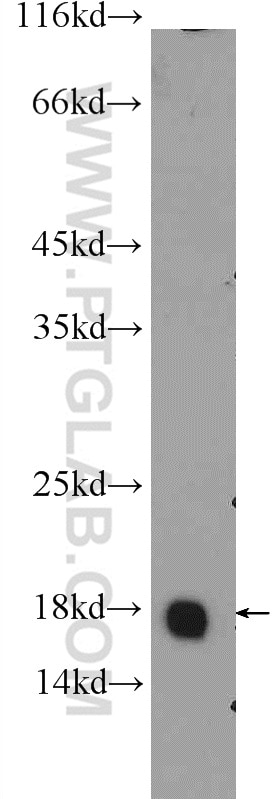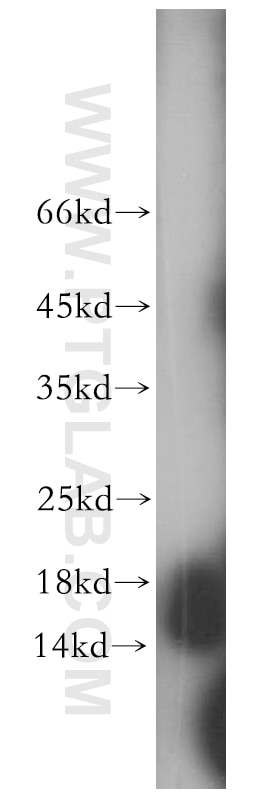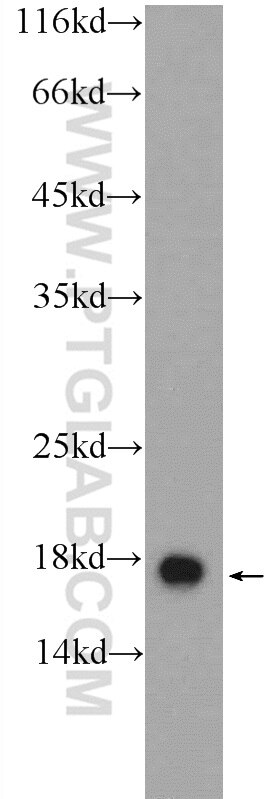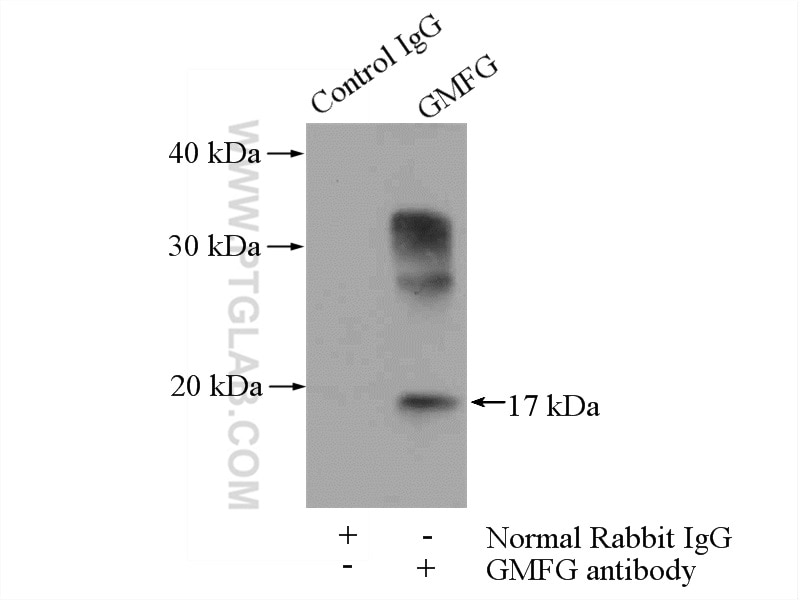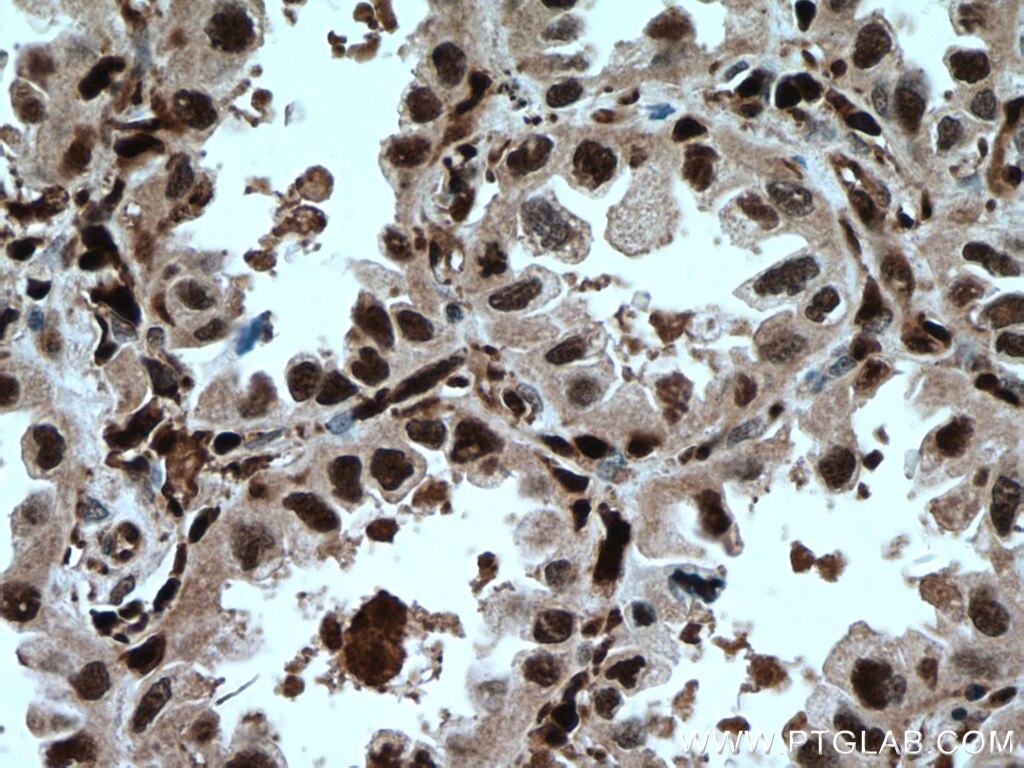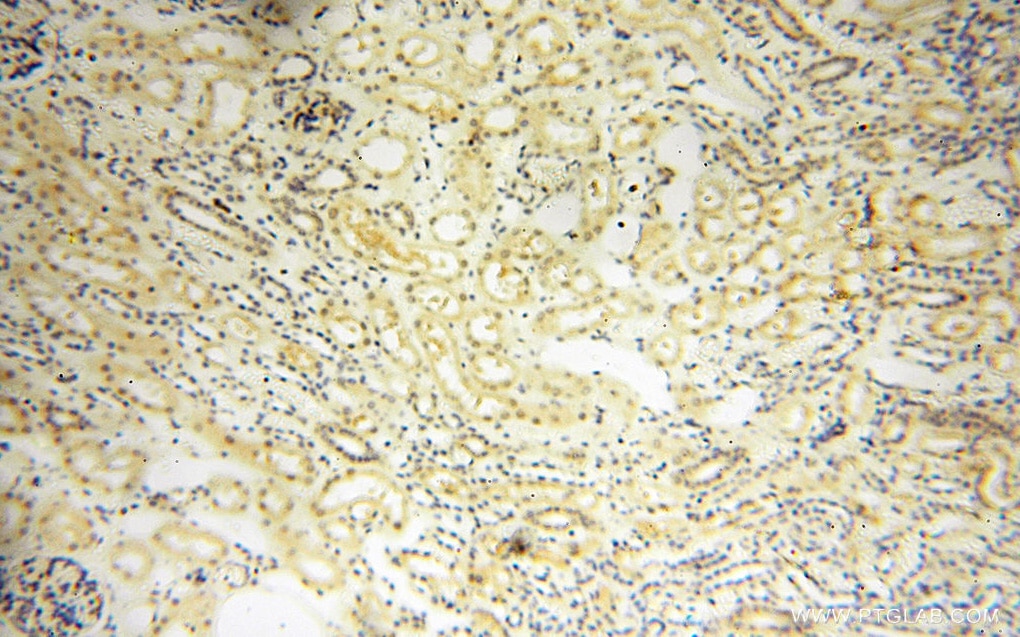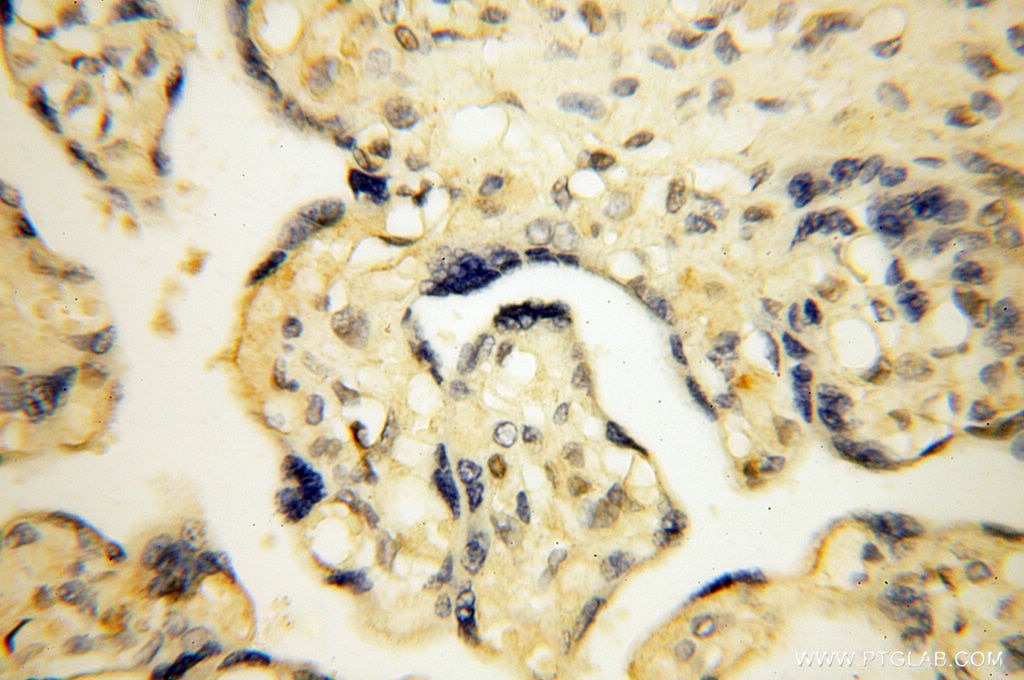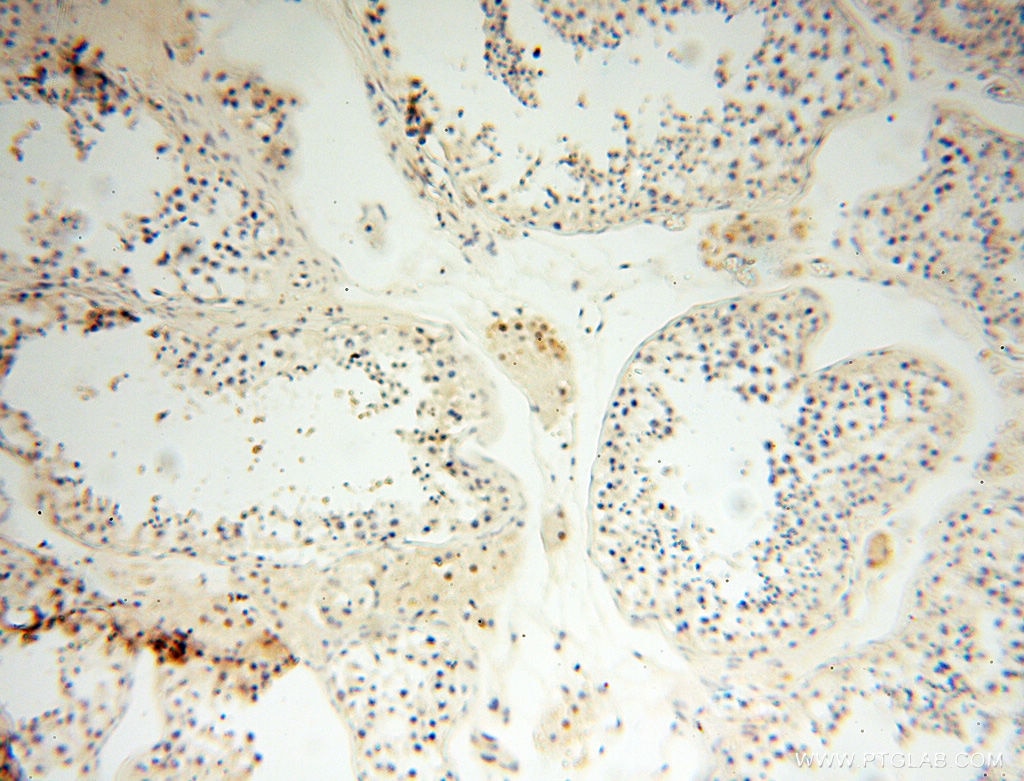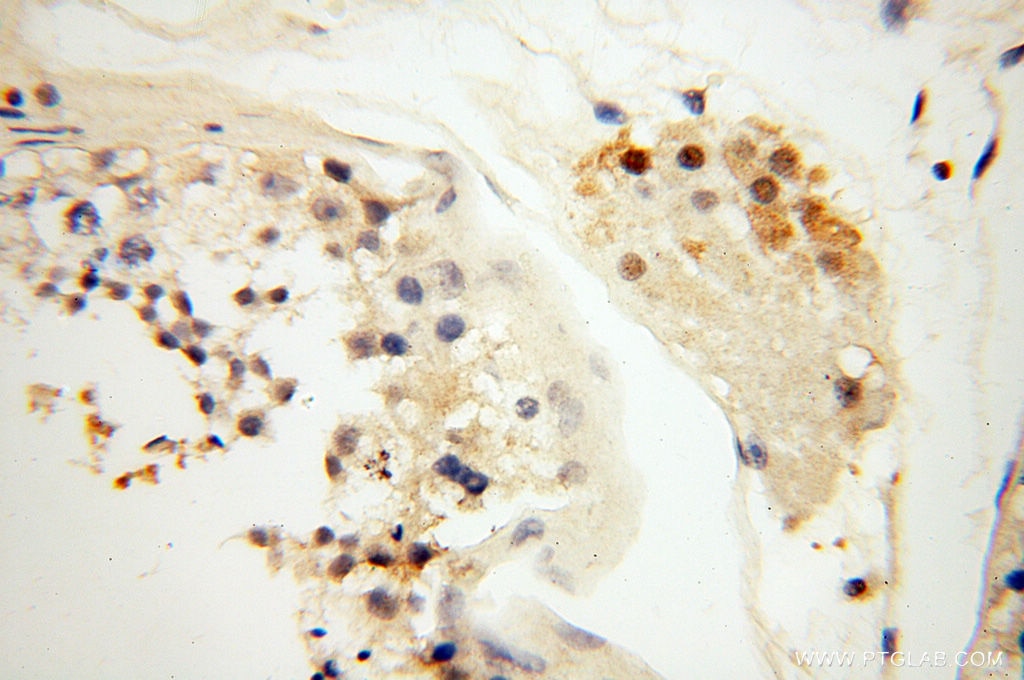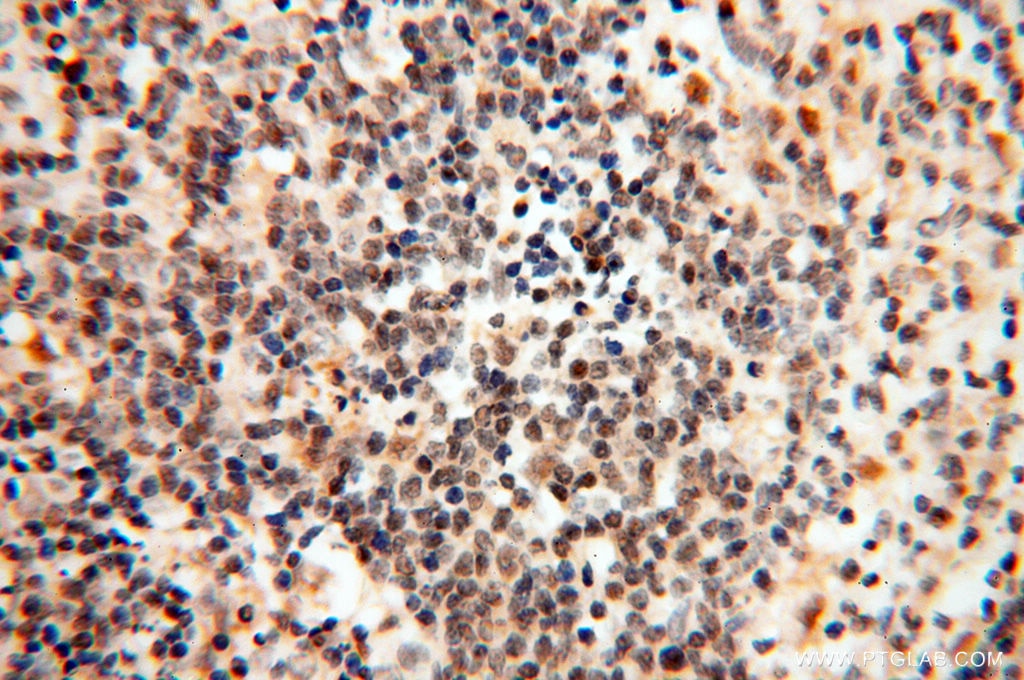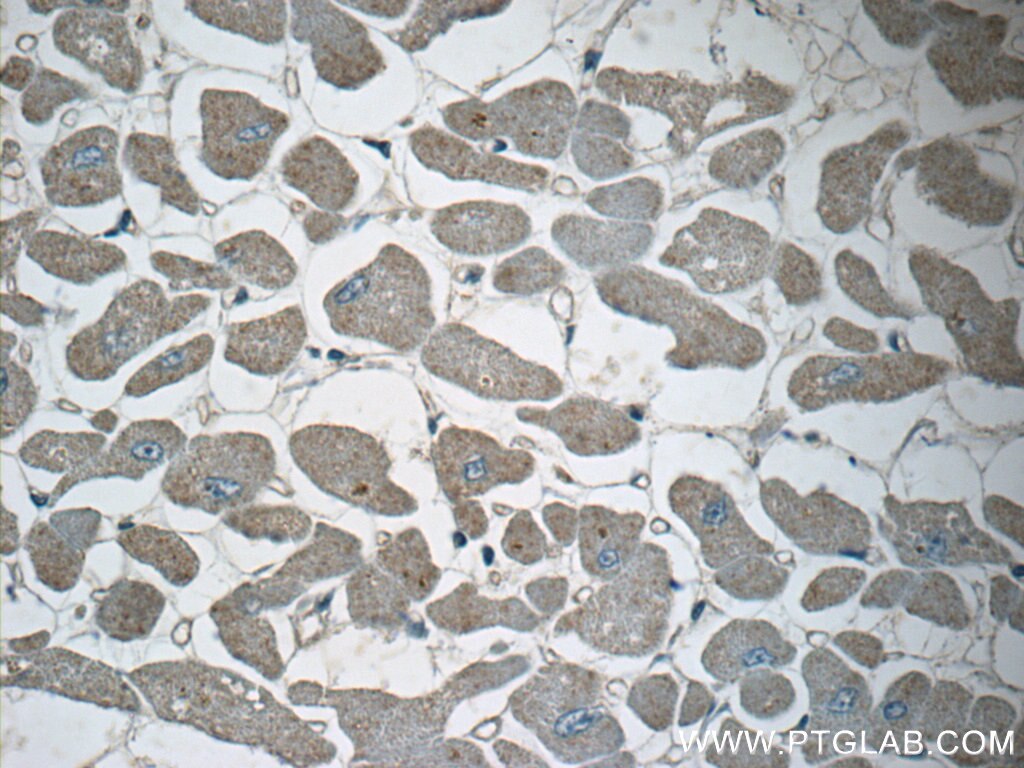- Featured Product
- KD/KO Validated
GMFG Polyklonaler Antikörper
GMFG Polyklonal Antikörper für WB, IP, IHC, ELISA
Wirt / Isotyp
Kaninchen / IgG
Getestete Reaktivität
human, Maus, Ratte
Anwendung
WB, IHC, IF, IP, ELISA
Konjugation
Unkonjugiert
Kat-Nr. : 13625-1-AP
Synonyme
Geprüfte Anwendungen
| Erfolgreiche Detektion in WB | Rattenhirngewebe, humanes Herzgewebe, humanes Plazenta-Gewebe, Maus-Plazenta-Gewebe |
| Erfolgreiche IP | Mausmilzgewebe |
| Erfolgreiche Detektion in IHC | humanes Lungenkarzinomgewebe, humanes Herzgewebe, humanes Nierengewebe, humanes Plazenta-Gewebe, humanes Milzgewebe, humanes Hodengewebe Hinweis: Antigendemaskierung mit TE-Puffer pH 9,0 empfohlen. (*) Wahlweise kann die Antigendemaskierung auch mit Citratpuffer pH 6,0 erfolgen. |
Empfohlene Verdünnung
| Anwendung | Verdünnung |
|---|---|
| Western Blot (WB) | WB : 1:500-1:1000 |
| Immunpräzipitation (IP) | IP : 0.5-4.0 ug for 1.0-3.0 mg of total protein lysate |
| Immunhistochemie (IHC) | IHC : 1:50-1:500 |
| It is recommended that this reagent should be titrated in each testing system to obtain optimal results. | |
| Sample-dependent, check data in validation data gallery | |
Veröffentlichte Anwendungen
| KD/KO | See 2 publications below |
| WB | See 6 publications below |
| IHC | See 4 publications below |
| IF | See 1 publications below |
| IP | See 1 publications below |
Produktinformation
13625-1-AP bindet in WB, IHC, IF, IP, ELISA GMFG und zeigt Reaktivität mit human, Maus, Ratten
| Getestete Reaktivität | human, Maus, Ratte |
| In Publikationen genannte Reaktivität | human, Maus, Ratte |
| Wirt / Isotyp | Kaninchen / IgG |
| Klonalität | Polyklonal |
| Typ | Antikörper |
| Immunogen | GMFG fusion protein Ag4538 |
| Vollständiger Name | glia maturation factor, gamma |
| Berechnetes Molekulargewicht | 141 aa, 17 kDa |
| Beobachtetes Molekulargewicht | 17 kDa |
| GenBank-Zugangsnummer | BC032819 |
| Gene symbol | GMFG |
| Gene ID (NCBI) | 9535 |
| Konjugation | Unkonjugiert |
| Form | Liquid |
| Reinigungsmethode | Antigen-Affinitätsreinigung |
| Lagerungspuffer | PBS with 0.02% sodium azide and 50% glycerol |
| Lagerungsbedingungen | Bei -20°C lagern. Nach dem Versand ein Jahr lang stabil Aliquotieren ist bei -20oC Lagerung nicht notwendig. 20ul Größen enthalten 0,1% BSA. |
Hintergrundinformationen
GMFG, is a highly conserved brain-specific protein that belongs to the GMF subfamily of the larger Actin-binding protein ADF family. GMFG is preferentially expressed in blood vessel cells and immune cells and its ectopic expression enhances cellular functions such as tube-formation and migration in vitro. GMFG mediates neutrophil and T-lymphocyte migration via regulation of actin cytoskeletal reorganization. GMFG also acts as an intracellular regulator of stress-activated signal transduction by demonstrating activation of p38 MAP kinase and transcription factor NF-kB in astrocytes.
Protokolle
| PRODUKTSPEZIFISCHE PROTOKOLLE | |
|---|---|
| WB protocol for GMFG antibody 13625-1-AP | Protokoll herunterladen |
| IHC protocol for GMFG antibody 13625-1-AP | Protokoll herunterladenl |
| IP protocol for GMFG antibody 13625-1-AP | Protokoll herunterladen |
| STANDARD-PROTOKOLLE | |
|---|---|
| Klicken Sie hier, um unsere Standardprotokolle anzuzeigen |
Publikationen
| Species | Application | Title |
|---|---|---|
Development Coronary veins determine the pattern of sympathetic innervation in the developing heart. | ||
J Leukoc Biol Glia maturation factor-γ regulates amyloid-β42 phagocytosis through scavenger receptor AI in murine macrophages
| ||
Front Cell Dev Biol The Actin-Disassembly Protein Glia Maturation Factor γ Enhances Actin Remodeling and B Cell Antigen Receptor Signaling at the Immune Synapse.
| ||
Front Oncol GMFG Has Potential to Be a Novel Prognostic Marker and Related to Immune Infiltrates in Breast Cancer. | ||
Oncol Rep Expression of glia maturation factor γ is associated with colorectal cancer metastasis and its downregulation suppresses colorectal cancer cell migration and invasion in vitro. | ||
Genes (Basel) High Level of GMFG Correlated to Poor Clinical Outcome and Promoted Cell Migration and Invasion through EMT Pathway in Triple-Negative Breast Cancer |

